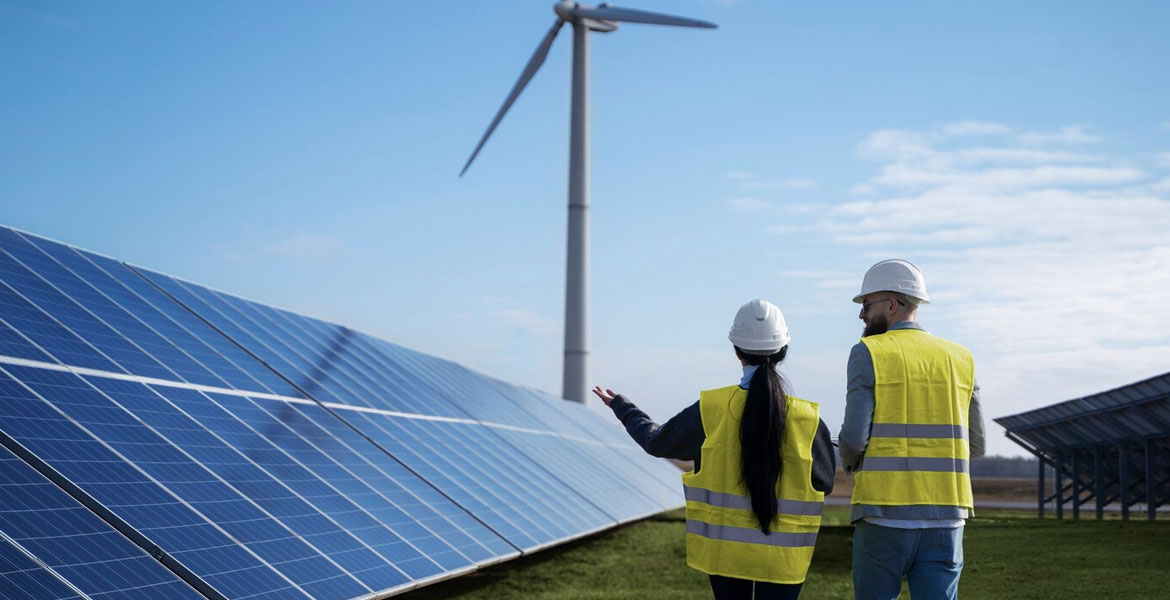The Overview!
Electrolysis Technology To Extract Hydrogen
Green hydrogen, produced using renewable energy sources, is gaining traction as a critical player in transitioning to a low-carbon economy. As a result, numerous manufacturing opportunities are available in producing and utilizing green hydrogen fuel.
One significant manufacturing opportunity for green hydrogen fuel is the development of hydrogen production facilities. These facilities typically utilize electrolysis technology to extract and process hydrogen from water and can be operated by sustainable energy sources such as solar, wind, or hydroelectric power. With the increasing demand for green hydrogen, constructing these facilities will be crucial to meet the demand and create jobs in the manufacturing sector.
Location: India
Services: Green Hydrogen Fuel
The Challenge!
Manufacturing And Storage Technologies Of Green Hydrogen Fuel
Hydrogen is typically stored under high pressure, which requires specialized tanks and infrastructure. Hydrogen can also be stored using solid-state or chemical storage systems, which provide more efficient and cost-effective solutions. Developing new and improved storage systems for green hydrogen fuel can create significant manufacturing opportunities.
Manufacturing opportunities also exist in the development of fuel cells for the use of green hydrogen fuel in transportation and power generation. Fuel cells utilize the chemical reaction between hydrogen and oxygen to produce electricity without the harmful emissions of fossil fuels. The production of fuel cells requires specialized materials and technologies and can create significant job opportunities in the manufacturing sector. The development and utilization of green hydrogen fuel are creating significant manufacturing opportunities across the value chain. From the production of hydrogen to the growth of fuel cells and supporting infrastructure, the manufacturing sector can play a critical role in the transition to a low-carbon economy.
Advantages of Green Hydrogen Fuel
- High Energy Density
- Low Carbon Emission
- Easy to store
The Production
Technologies Used For Producing A Green Liquid Hydrogen
Producing green liquid hydrogen involves using renewable energy sources to power the process of splitting water molecules into hydrogen and oxygen through electrolysis. Some of the key technologies used to produce green liquid hydrogen include
Commercial, Residential And Industrial Solar Systems!
Our presence ensures timeliness, cost efficiency & compliance adherence!
Environmentally Sustainable Production Process
Despite its environmentally sustainable production process, “green” hydrogen currently constitutes less than 1% of global hydrogen production, mainly due to its high cost of production. According to the Council for Energy, Environment, and Water’s 2020 analysis, producing a kilogram of “green” hydrogen can cost anywhere from $3.5 to $5.5. In contrast, the production cost of “black” hydrogen is $0.9-1.5 per kg, “grey” hydrogen costs $1.7-2.3, and “blue” hydrogen ranges from $1.3-3.6 per kg.
Suitable for commercial, residential and utility-scale projects, our bifacial panels are supported by supply chain management. For detailed specifications, consult our Solar Division.
Green Hydrogen cost
$3.5 to $5.5
Black Hydrogen cost
$0.9 to $1.5
Blue Hydrogen cost
$1.3 to $3.6
Grey Hydrogen cost
$1.7 to $2.3
Storage Technology For Green Liquid Hydrogen
Green liquid hydrogen is typically stored and transported in specialized tanks designed to maintain the hydrogen in a liquid state at shallow temperatures and high pressures. There are several storage technologies for green liquid hydrogen
The Aim
National Green Hydrogen Mission
The mission aims to encourage the widespread production of “green” hydrogen and establish India as a significant fuel exporter. The objective of the task is to establish a production capacity for “green” hydrogen of at least 5 MMT (Million Metric Tonnes) per year while concurrently adding 125 GW (gigawatt) of renewable energy capacity throughout the country. It will involve decarbonizing the industrial, mobility, and energy sectors, reducing reliance on imported fossil fuels and feedstock, fostering indigenous manufacturing capabilities, generating job opportunities, and advancing new technologies such as efficient fuel cells.
By 2030, the government expects to attract investments worth ₹8 trillion and create over six lakh jobs through its initiatives. Furthermore, these endeavors are expected to avert around 50 MMT per annum of CO2 emissions by 2030. As per India’s Nationally Determined Contribution (NDC) to the Paris Agreement, the country has committed to lowering the emissions intensity of its GDP by 45% by 2030, based on 2005 levels.

